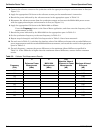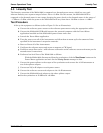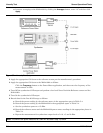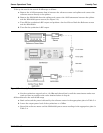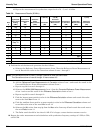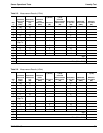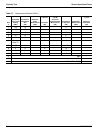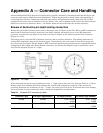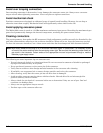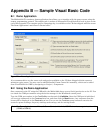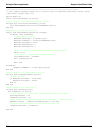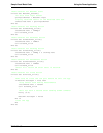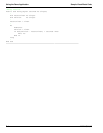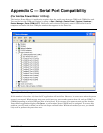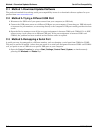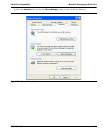
Connector Care and Handling
A-2 MA24106A UG
Avoid over torquing connectors
Over torquing connectors is destructive; it may damage the connector center pin. Always use a connector
torque wrench when tightening connectors. Never use pliers to tighten connectors.
Avoid mechanical shock
Precision connectors are designed to withstand years of normal bench handling. However, do not drop or
otherwise treat them roughly. Mechanical shock will significantly reduce their service life.
Avoid applying excessive power
The MA24106A sensor is rated at +33 dBm maximum continuous input power. Exceeding the maximum input
power level permanently damages the internal components, rendering the power sensor useless.
Cleaning connectors
The precise geometry that makes the RF component's high performance possible can easily be disturbed by dirt
and other contamination adhering to the connector interfaces. When not in use, keep the connectors covered.
To clean the connector interfaces, use a clean cotton swab that has been dampened with denatured alcohol.
The following are some important tips on connector care:
• Use only isopropyl alcohol as a cleaning solvent. Do not use excessive amounts of alcohol as prolonged
drying of the connector may be required.
• Never put lateral pressure on the center pin of the connector.
• Verify that no cotton or other foreign material remains in the connector after cleaning.
• If available, use compressed air to remove foreign particles and to dry the connector.
• After cleaning, verify that the center pin has not been bent or damaged.
• Avoid touching connector mating planes with bare hands. Natural skin oils and microscopic dirt
particles and very hard to remove.
• Always check the pin depth of a connector before use to determine if they are out of spec. One bad
connector can damage many.
• Always use an appropriate torque wrench.
• Put dust caps on the connector after use.
Note: Most cotton swabs are too large to fit in the smaller connector types. In these cases, it is necessary to peel
off most of the cotton and then twist the remaining cotton tight. Be sure that the remaining cotton does not
get stuck in the connector. Cotton swabs of the appropriate size can be purchased through a medical
laboratory-type supply center.



